Team Analysis: Bologna
Bologna have really exceeded expectations this season since former Azzurri head coach Roberto Donadoni took over the job last October.
After taking charge of a team that had lost 8 from 10 Serie A games, Donadoni amassed 30 points out from 18 games, averaging 1.66 points per game (against the 0.6 ppg recorded under Delio Rossi). Although a recent loss to Inter slightly lowered this average, the result is so remarkable to deserve a look to. So what’s their secret behind this turnaround? There isn’t just one.
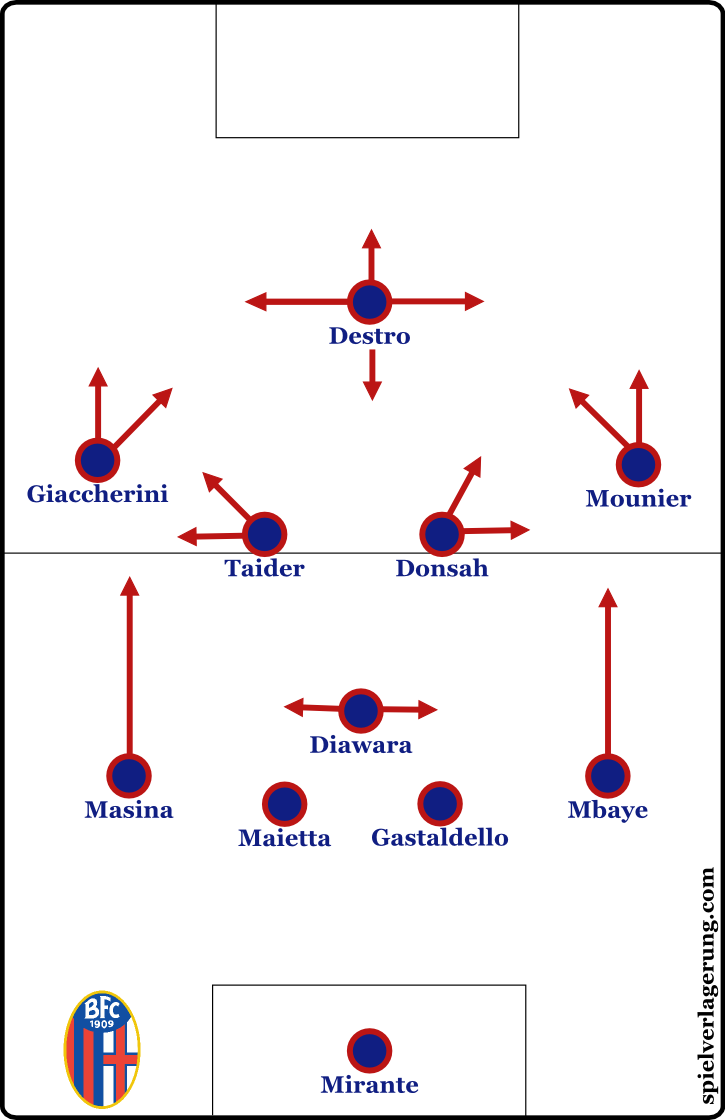 Supported by the North American tycoon Joey Saputo, the Bologna side have assembled a squad filled with excellent youngsters and some useful veterans. The midfield is filled with three players born in the ‘90s: Godfred Donsah (1996), Amadou Diawara (1997) and Shapir Taider (1992). Building his team around this trio, Donadoni has successfully put in place a wing-oriented system within a 4-3-3 shape. Bologna usually play an attacking game based on a patient development of possession. Across the defence they have one of the best Serie A’s central defender combos in Daniele Gastaldello and Domenico Maietta. The highly-valuable Diawara provides stability in the no. 6 position, with Donsah playing to the right of him.
Supported by the North American tycoon Joey Saputo, the Bologna side have assembled a squad filled with excellent youngsters and some useful veterans. The midfield is filled with three players born in the ‘90s: Godfred Donsah (1996), Amadou Diawara (1997) and Shapir Taider (1992). Building his team around this trio, Donadoni has successfully put in place a wing-oriented system within a 4-3-3 shape. Bologna usually play an attacking game based on a patient development of possession. Across the defence they have one of the best Serie A’s central defender combos in Daniele Gastaldello and Domenico Maietta. The highly-valuable Diawara provides stability in the no. 6 position, with Donsah playing to the right of him.
On the other side is Taider, a mobile and effective player who supports well the width and who also works through the left half-space. But Bologna also possess a strong front-three with good players both on the flanks and centrally. Mattia Destro is the no. 9, sided by a couple of gifted wingers in Emanuele Giaccherini and Anthony Mounier. The more defensive-oriented Luca Rizzo has also played a part as Donadoni has fielded him to line up a more balanced starting XI.
Bologna aren’t reliant on the midfielders in the build-up as they have two good ball-playing centre-backs in Gastaldello and Maietta. By the way, they don’t play through the channels, opting to play out wide where a triangle includes a full-back, an interior midfielder and a wide forward. So, they try to stretch the opposition horizontally and move the wide triangles, which is crucial to their overloads and combinations. This allows Bologna to generate good connections around the ball in wider areas, with a lot of possible combination plays between the outside players.
Alternatively, their centre-backs can move closer to the midfield to play long balls towards Destro.
Take care of the wings
However, in some situations the opposition quickly shift laterally, closing the spaces around the outside players. Due to the impossibility to progress through the flank, they quickly move the ball back to the centre-backs or Diawara, for immediate circulation towards the weak side.
That’s far from the classic juego de posición, in which a team frequently use combinations to overload the strong side to create a free man within the opposition’s weak side. Instead, that’s more a flank-oriented way to break the lines. In other words, Bologna‘s spacing isn’t from half-space to half-space but more oriented to take control of the wings. When they have possession in the half-space, they often use this situation to switch towards the wide areas where full-backs and wingers are positioned. They try to obtain their goal through rotations that occur between the interior midfielders and the wingers, with both often alternating their positions in the build-up phase.
Outside combinations
In the next series of pictures, we take a look at some of basic combinations and rotations made by Bologna in the way to progress sideways through the opposition defence. In the first image the full-back passes the ball towards the winger, who passes it back to the interior midfielder. Then, the interior midfielder sends the ball back to the side but forward, with the winger moving higher up the field to receive it.
In the second picture the full-back is still the ball-carrier. The winger moves down the field. This move usually pulls away the opposite full-back, giving space for the interior midfielder to attack widely.
Here below, we have a pass played by the interior midfielder to the full-back, who moves high up to fill the space voided by the winger. All of them are classic 4-3-3’s three-man combinations.
But Bologna can also get more players involved as they could utilise four or five-man combinations as showed in the following picture in which we see the interior midfielder switch the play utilising Destro as an offensive pivot. This move is particularly effective when Bologna need to switch the play due to opposition’s overloading of the strong side.
Fluidity and switch of play
That said, even if they use what would seem a rigid attacking structure, Bologna are still fluid in possession, so it creates a balanced system. Donadoni adopts a good structure in possession, which allows the ball-carrier to have immediate open options at his disposal. Bologna try to open up space on the flanks and attack with a combination of movement and vertical passes, trying to penetrate the opposing defence. This happens by a large amount of connections created through this laterally-focused shape as Bologna use many combinations to break through the opposition’s lines and create dangerous situations.
Surely, the goal is in the centre of the pitch. But Bologna like to find space on the flanks before switching the ball centrally, often through cutting inside movements made by the wingers. When the ball is high up the pitch and out wide, Bologna attack the penalty area with Destro and the players on the weak side, especially with the far-side winger.
Semi Ball-Oriented Pressing
Without possession, Bologna have a strong and highly organised defence. They employ a semi ball-oriented scheme which allows them to put pressure whilst maintaining compactness and stability. Bologna’s pressing is oriented to where the ball is. The ball-carrier is pressed while the overall defensive structure is retained. They also press the immediate options near the man with the ball, with the goal to prevent the opposition from progressing.
At the same time, Bologna try to guide opposition outward by retaining a compact defensive shape in the middle, closing all the slots and forcing them to play near the touchlines, where the team move up to restrict the player’s options. They don’t make a strong use of cover shadows and that’s usual in Serie A as Italian coaches rarely stress their players to do it.
As the opposition move the ball down a flank, Bologna tend to settle into a compact 4-5-1 shape with both Giaccherini and Mounier collapsing behind to help the defence. The other key factor is that the team pressure the ball-carrier while some Serie A teams favour to drop back covering the space rather than press the ball.
Conclusion
With wingers such as Giaccherini and Mounier, it is no surprise to see a strong wing-orientation in possession. Almost every aspect of Bologna’s offensive game is focused around using the sideways chains to destabilise the opposing defence and create chances.
The game plan is built around the idea to move the ball through the wider areas before attacking the centre. The 4-3-3 team’s structure facilitates high levels of connections between the players as this formation is built on the principle of triangular passing. As pointed earlier, Bologna are fluid when having the ball.
Another component of their attacking style is the strong passing through the centre-backs, as they look to integrate both Maietta and Gastaldello in the build-up. That said, both rarely move up to enforce the midfield as they are mostly utilised to move the ball and switch the play from the strong side to the weak side. They do it well also because Serie A sides rarely press high up the pitch so Maietta and Gastaldello often get enough freedom to show their passing skills.
At the end, since he took the job during the 2015-16 season, Donadoni has proven that his side are amongst the elite of Serie A in terms of playing quality. If this will be enough to gain Donadoni another chances with the big boys (after the so-so performances he showed managing Napoli and Azzurri) it remains to be seen.
Michele Tossani regularly writes for Futbol Tactico and MartiPerarnau.com. Follow him on Twitter @MicheleTossani
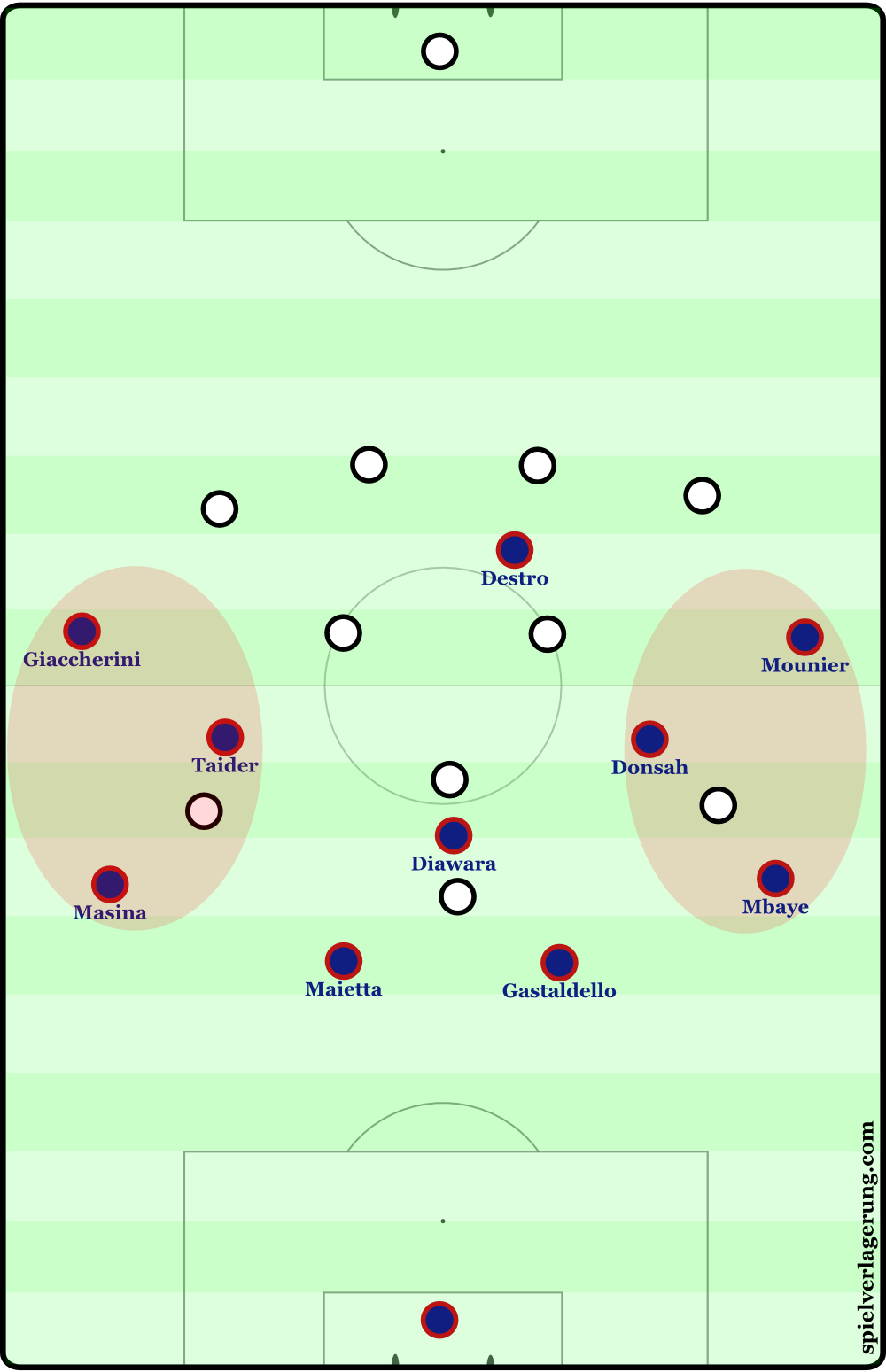
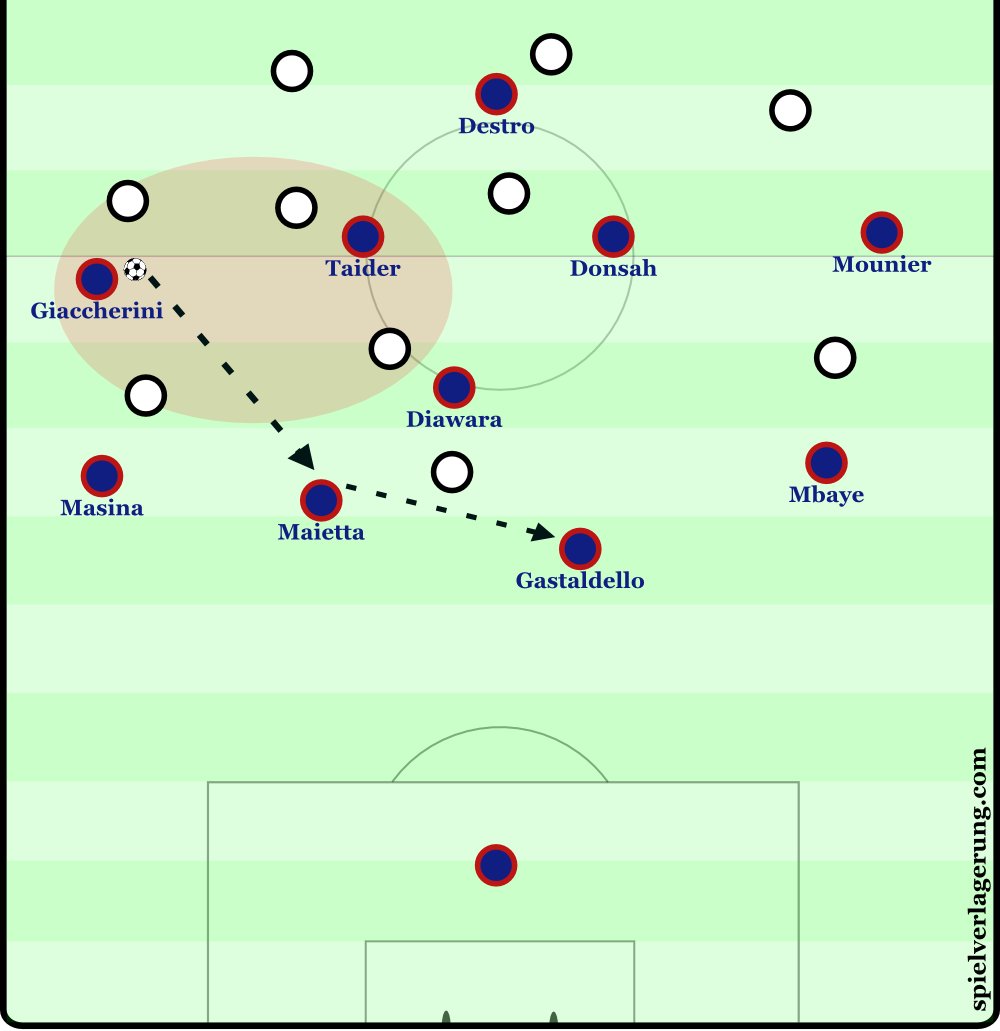
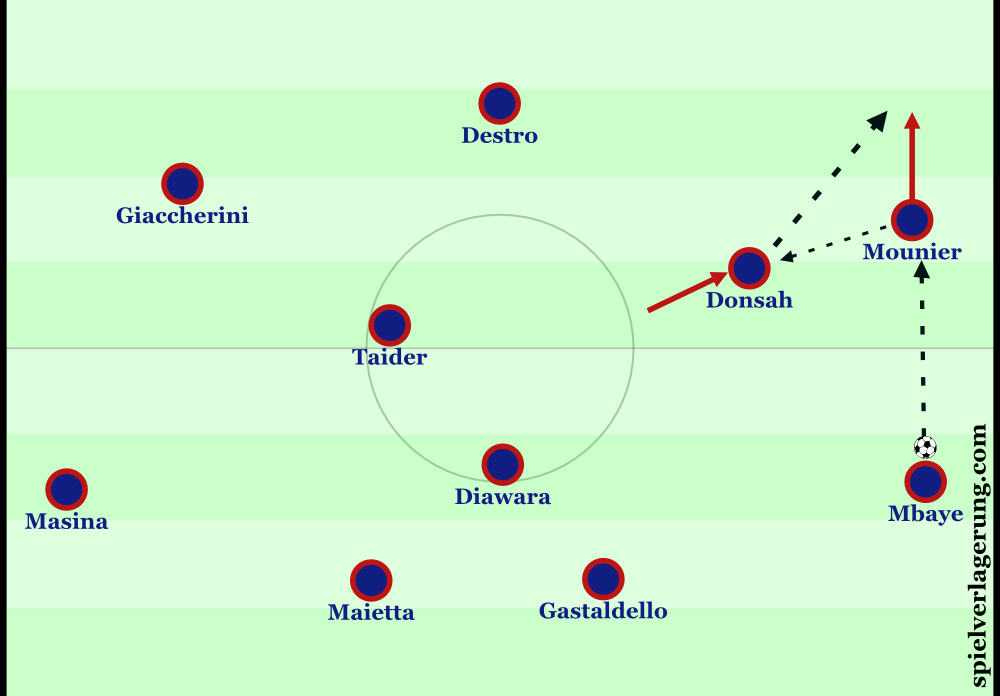

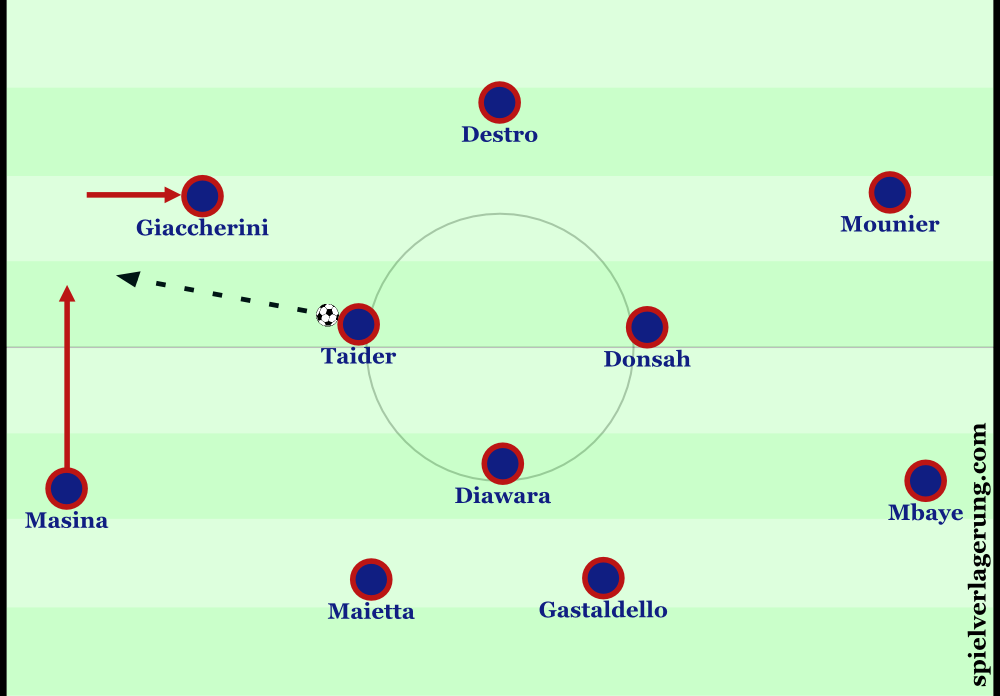
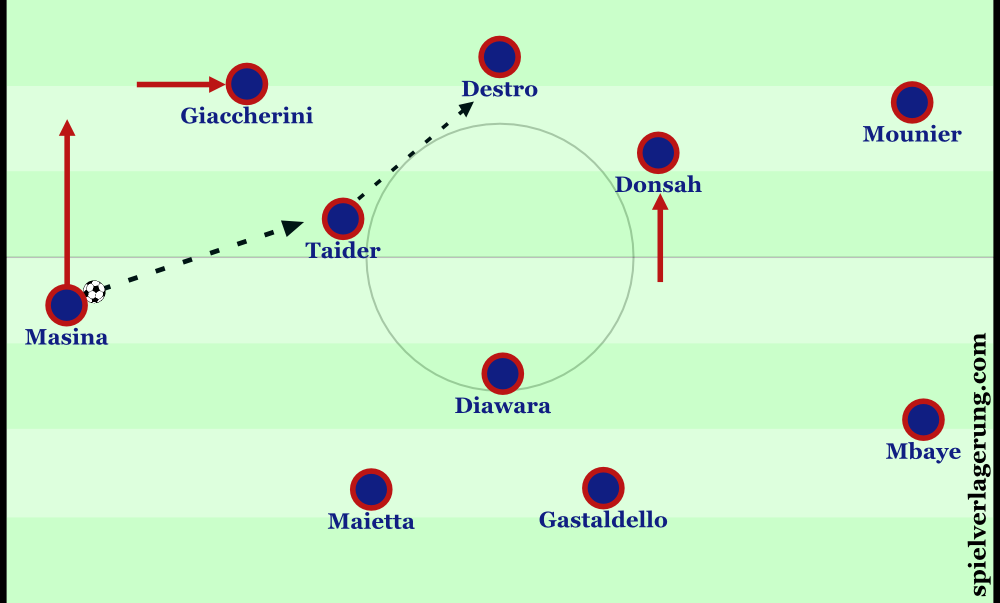
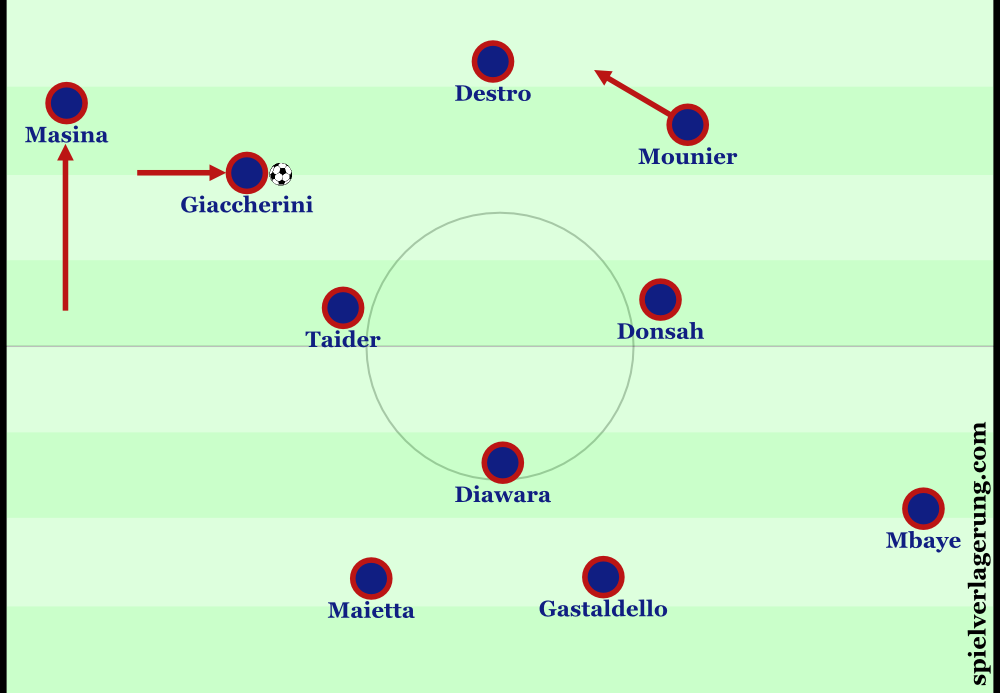
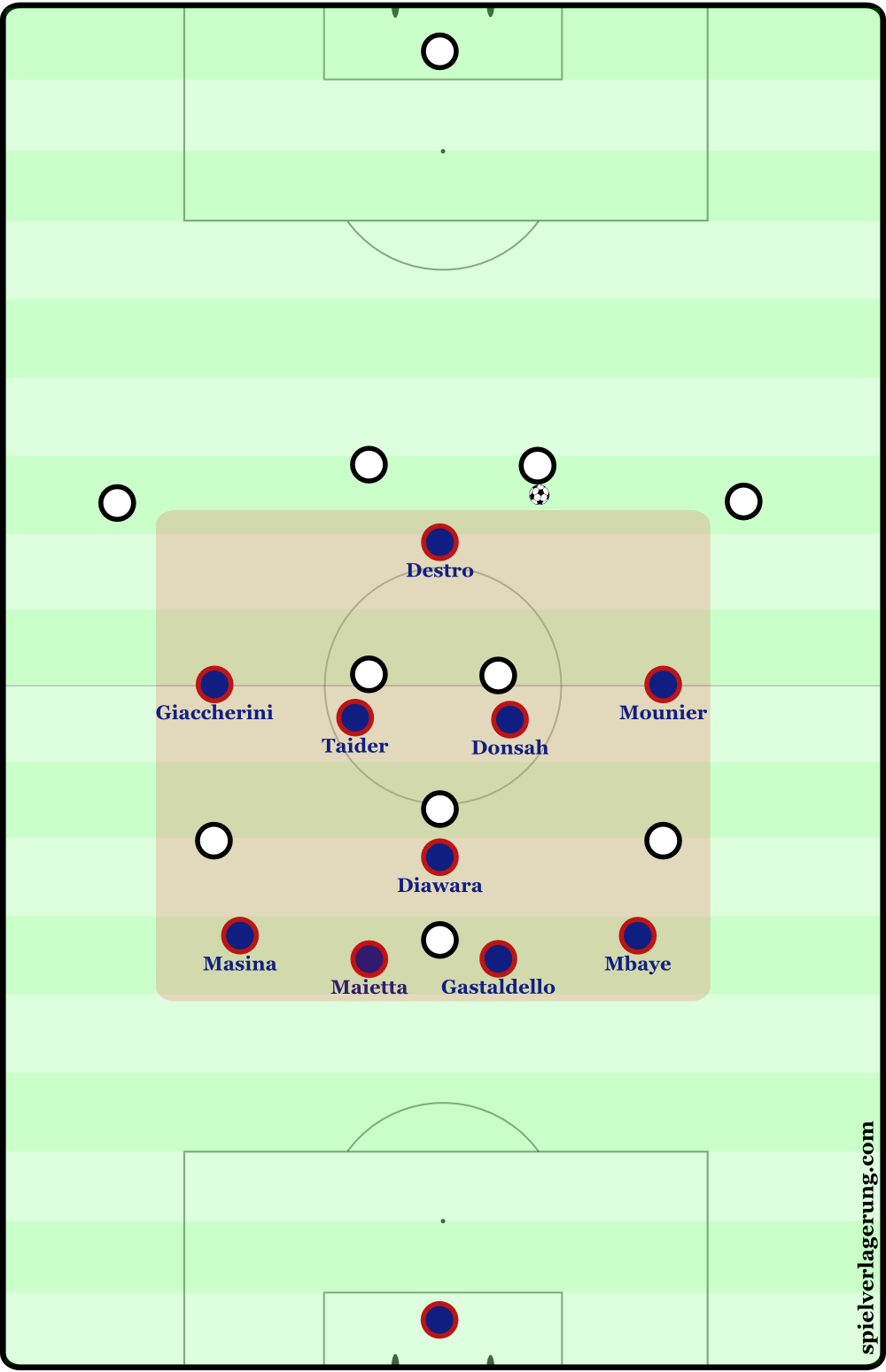

Keine Kommentare vorhanden Alle anzeigen